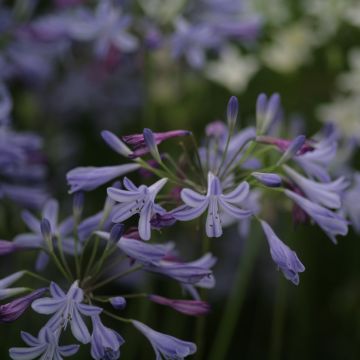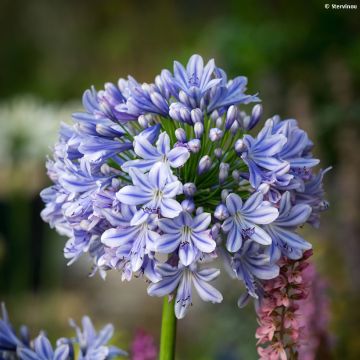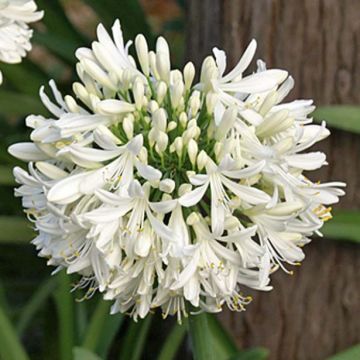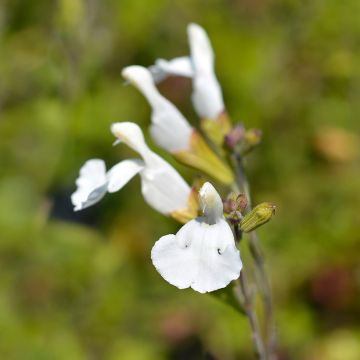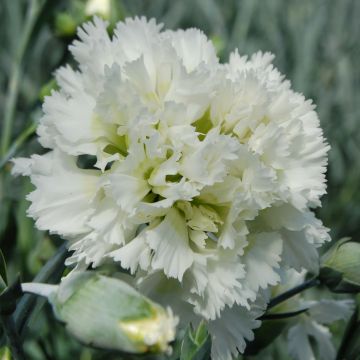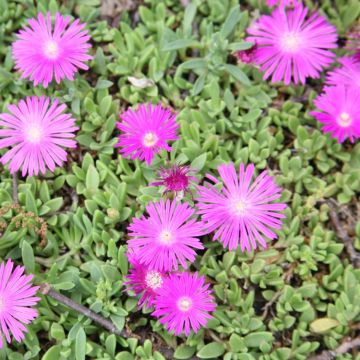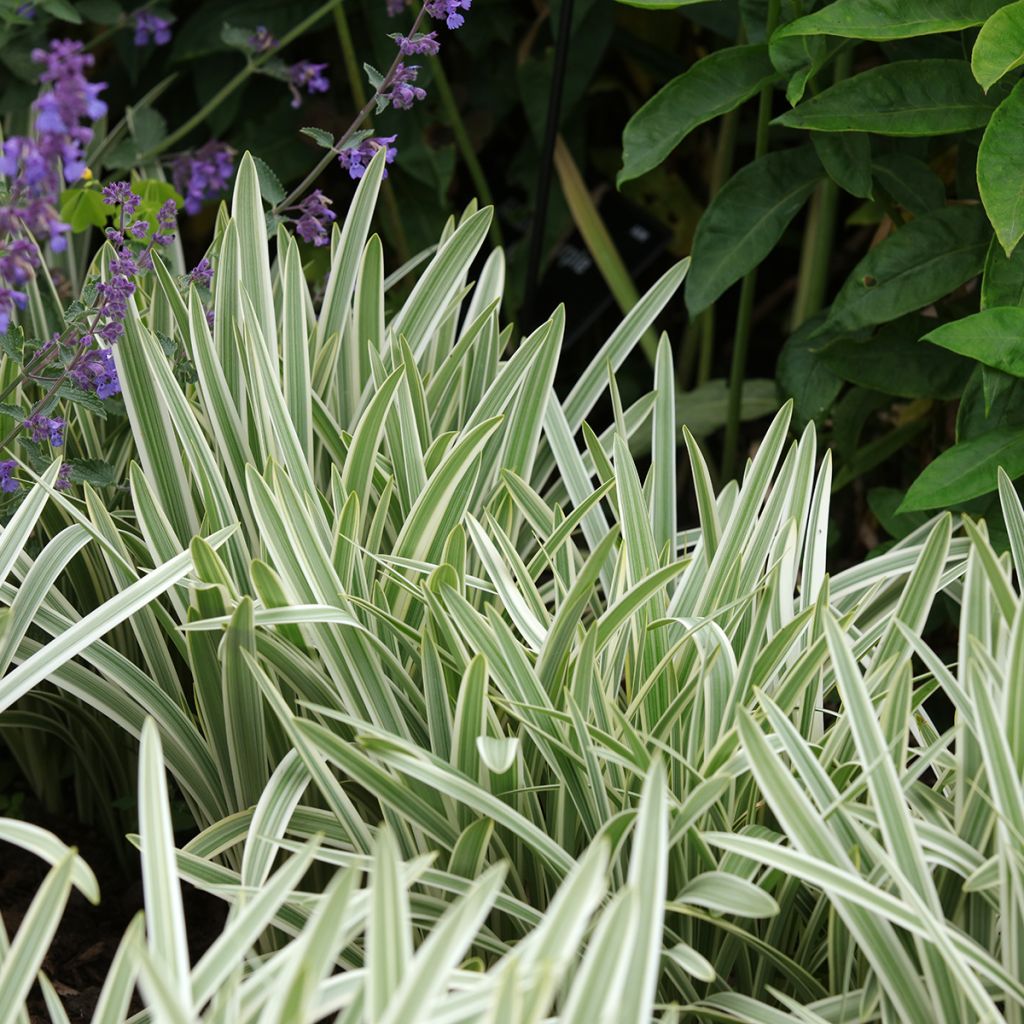

Agapanthus Silver Moon
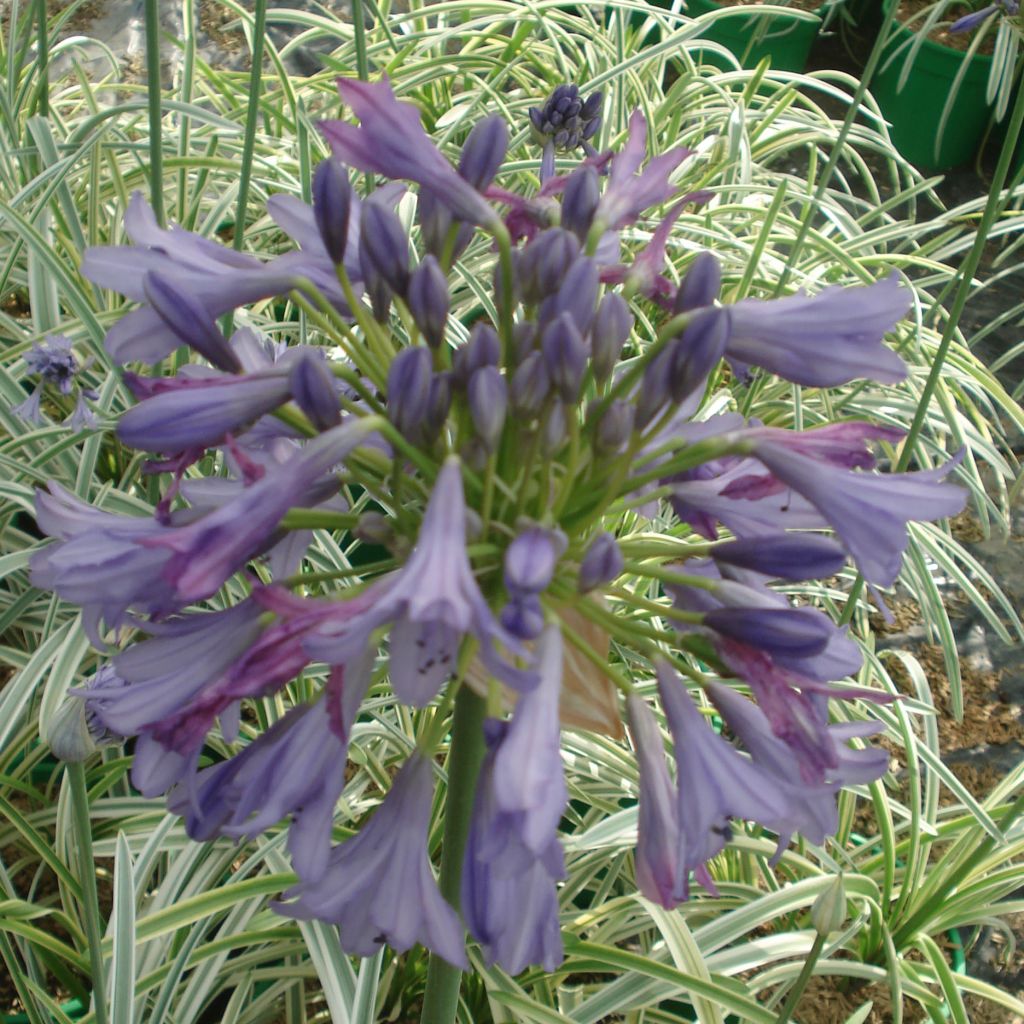

Agapanthus Silver Moon


Agapanthus Silver Moon
Agapanthus Silver Moon
Agapanthus x campanulatus Silver Moon®
African Lily, Lily of the Nile
The 4 bare root Agapanthus Silver Moon received are too small compared to the Black Pantha pots that I also ordered. There's no comparison. If I had known (or had read the description better) that the bare roots would be limited to a bulb of 5-10 cm maximum, I would have opted for the slightly more expensive pots, but with a plant almost ready to flower in the first or at the latest the second year.
Emin, 15/04/2024
This item cannot be shipped to the selected country
Delivery charge from €5.90
Delivery charge from €5.90
More information
Schedule delivery date,
and select date in basket
This plant carries a 12 months recovery warranty
More information
We guarantee the quality of our plants for a full growing cycle, and will replace at our expense any plant that fails to recover under normal climatic and planting conditions.
From €5.90 for pickup delivery and €6.90 for home delivery
Express home delivery from €8.90.
From €5.90 for pickup delivery and €6.90 for home delivery
Express home delivery from €8.90.
Does this plant fit my garden?
Set up your Plantfit profile →
Description
Agapanthus Silver Moon is aptly named. It is a true collector's plant distinguished by its fantastic foliage adorned with light, completely variegated with green and cream-white, particularly wide. This deciduous and hardy bulbous plant is adorned in June-July with numerous medium lavender-blue umbels, carried well above the foliage. Ideal for adding a touch of poetry and a seaside atmosphere to balconies, terraces, and flower beds, or to summer bouquets. It should be grown in full sun, in rich, well-drained, moist to dry soil.
This new hybrid Agapanthus is a bulbous plant of the lily family, relatively hardy and its foliage disappears in autumn.
The Silver Moon variety is an exceptional form, which appears from a distance variegated with silver. The plant develops from a short rhizome with fleshy roots. It forms a sprawling clump, composed of broadly bordered grey-green ribbon-like leaves with white edges, quite wide, deciduous. When in flower, it will not exceed 70cm (28in) in height by 40cm (16in) in width. It is in the heart of summer that its sturdy floral stems appear, crowned with slightly loose umbels, with 20 to 50 lavender-blue flowers. This bulbous plant is hardy up to about -15°C, in well-drained soil and sheltered exposure.
Agapanthus Silver Moon is used in the background of flower beds, surrounded by low-growing perennials with grey foliage for example, or to border pathways, with the feet covered in creeping plants (Cerastiums, Artemisias, creeping Euonymus, Aubrietas). It will also be invited in large pots on the terrace, in a beautiful wide pot that will allow this plant to produce numerous flower spikes. This method of cultivation has the advantage of being able to store it indoors during intense frosts. It is a plant that thrives by the seaside, in an English cottage, and even in a contemporary city garden. Cut and placed in a vase, the flowers and leaves will bring their freshness and originality to the house.
Report an error about the product description
Agapanthus Silver Moon in pictures
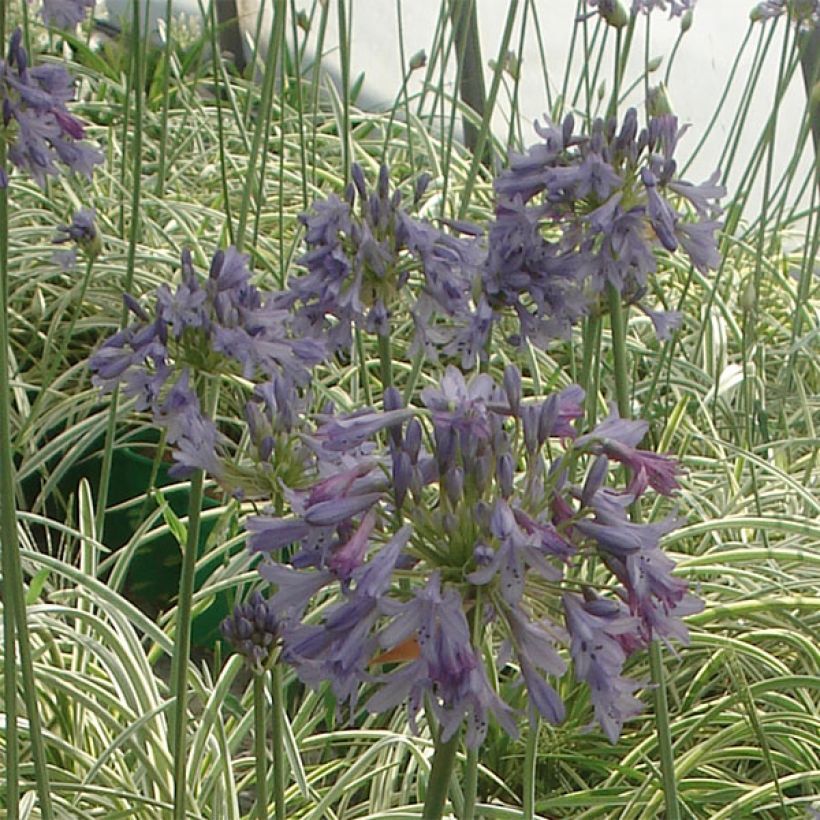

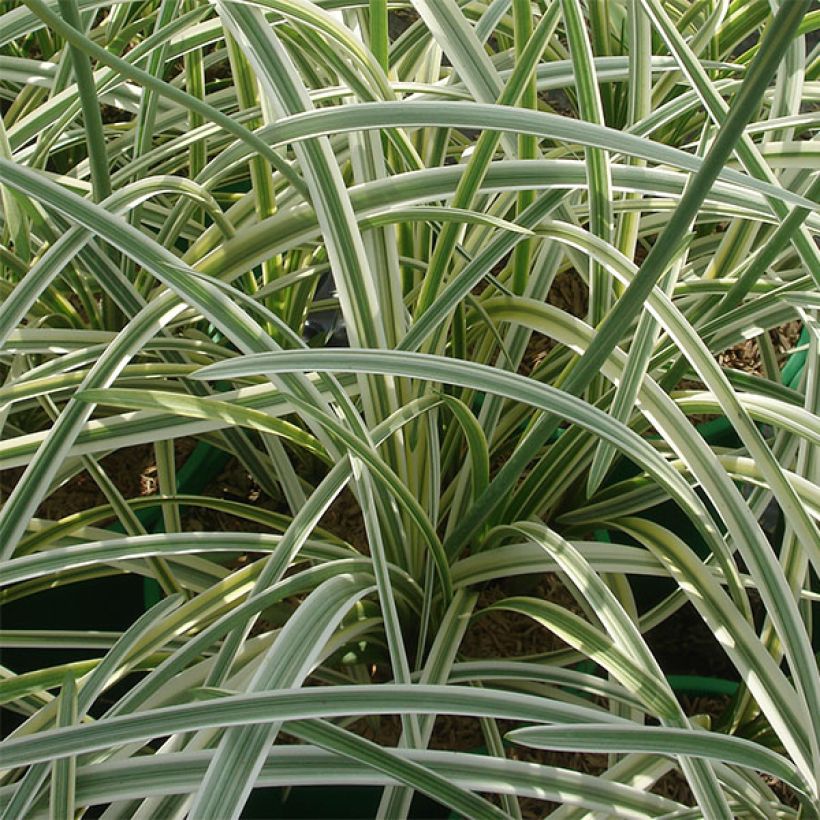

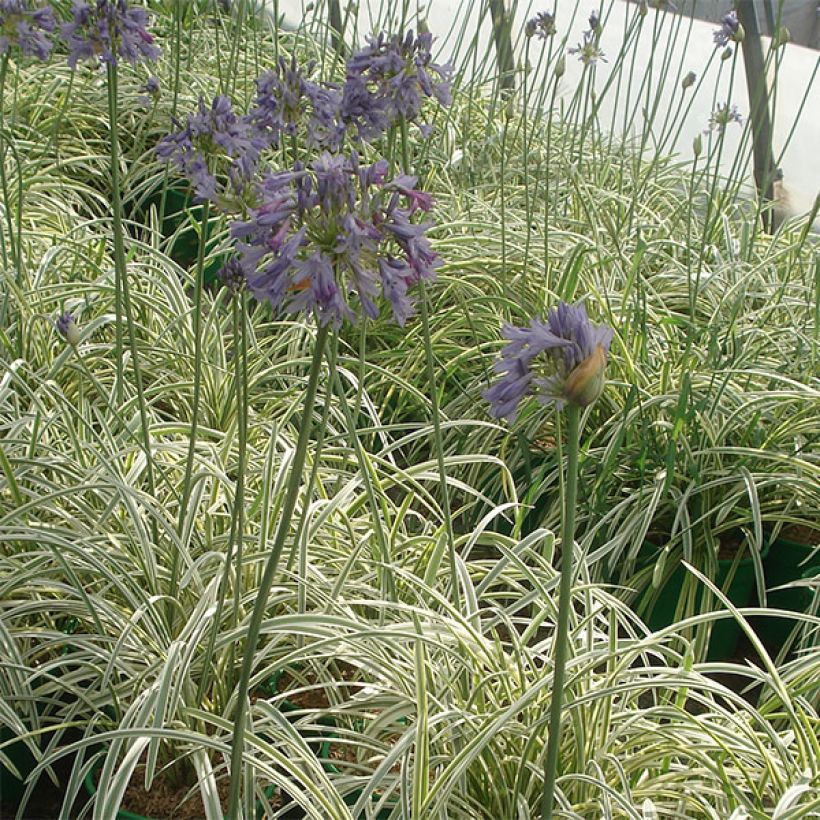

Flowering
Foliage
Plant habit
Botanical data
Agapanthus
x campanulatus
Silver Moon®
Alliaceae - Liliaceae
African Lily, Lily of the Nile
Cultivar or hybrid
Other Agapanthus - Lily of the Nile
Planting and care
The Silver Moon Agapanthus is grown in full sun in a warm location, in a sheltered spot facing south. Place it in a rich and moist but well-drained soil to optimize its hardiness. Water Agapanthus regularly during the growth period (twice a week) but not at all in winter. Mulch the base with a layer of dead leaves about 20cm (8in) thick, covered with a mesh to prevent wind damage. Snow also provides excellent protection against excessive moisture and cold. If grown in a pot, bring the plant indoors during severe frost, in an unheated room. When planting, place them at a depth of 10cm (4in) in a mixture of leaf soil and compost. Once established in the ground, avoid disturbing Agapanthus. Remove faded leaves in autumn. Cut back the flower stalks to prevent the plant from using energy to produce seeds.
Planting period
Intended location
Care
-
, onOrder confirmed
Reply from on Promesse de fleurs
Mediterranean perennials
Haven't found what you were looking for?
Hardiness is the lowest winter temperature a plant can endure without suffering serious damage or even dying. However, hardiness is affected by location (a sheltered area, such as a patio), protection (winter cover) and soil type (hardiness is improved by well-drained soil).

Photo Sharing Terms & Conditions
In order to encourage gardeners to interact and share their experiences, Promesse de fleurs offers various media enabling content to be uploaded onto its Site - in particular via the ‘Photo sharing’ module.
The User agrees to refrain from:
- Posting any content that is illegal, prejudicial, insulting, racist, inciteful to hatred, revisionist, contrary to public decency, that infringes on privacy or on the privacy rights of third parties, in particular the publicity rights of persons and goods, intellectual property rights, or the right to privacy.
- Submitting content on behalf of a third party;
- Impersonate the identity of a third party and/or publish any personal information about a third party;
In general, the User undertakes to refrain from any unethical behaviour.
All Content (in particular text, comments, files, images, photos, videos, creative works, etc.), which may be subject to property or intellectual property rights, image or other private rights, shall remain the property of the User, subject to the limited rights granted by the terms of the licence granted by Promesse de fleurs as stated below. Users are at liberty to publish or not to publish such Content on the Site, notably via the ‘Photo Sharing’ facility, and accept that this Content shall be made public and freely accessible, notably on the Internet.
Users further acknowledge, undertake to have ,and guarantee that they hold all necessary rights and permissions to publish such material on the Site, in particular with regard to the legislation in force pertaining to any privacy, property, intellectual property, image, or contractual rights, or rights of any other nature. By publishing such Content on the Site, Users acknowledge accepting full liability as publishers of the Content within the meaning of the law, and grant Promesse de fleurs, free of charge, an inclusive, worldwide licence for the said Content for the entire duration of its publication, including all reproduction, representation, up/downloading, displaying, performing, transmission, and storage rights.
Users also grant permission for their name to be linked to the Content and accept that this link may not always be made available.
By engaging in posting material, Users consent to their Content becoming automatically accessible on the Internet, in particular on other sites and/or blogs and/or web pages of the Promesse de fleurs site, including in particular social pages and the Promesse de fleurs catalogue.
Users may secure the removal of entrusted content free of charge by issuing a simple request via our contact form.
The flowering period indicated on our website applies to countries and regions located in USDA zone 8 (France, the United Kingdom, Ireland, the Netherlands, etc.)
It will vary according to where you live:
- In zones 9 to 10 (Italy, Spain, Greece, etc.), flowering will occur about 2 to 4 weeks earlier.
- In zones 6 to 7 (Germany, Poland, Slovenia, and lower mountainous regions), flowering will be delayed by 2 to 3 weeks.
- In zone 5 (Central Europe, Scandinavia), blooming will be delayed by 3 to 5 weeks.
In temperate climates, pruning of spring-flowering shrubs (forsythia, spireas, etc.) should be done just after flowering.
Pruning of summer-flowering shrubs (Indian Lilac, Perovskia, etc.) can be done in winter or spring.
In cold regions as well as with frost-sensitive plants, avoid pruning too early when severe frosts may still occur.
The planting period indicated on our website applies to countries and regions located in USDA zone 8 (France, United Kingdom, Ireland, Netherlands).
It will vary according to where you live:
- In Mediterranean zones (Marseille, Madrid, Milan, etc.), autumn and winter are the best planting periods.
- In continental zones (Strasbourg, Munich, Vienna, etc.), delay planting by 2 to 3 weeks in spring and bring it forward by 2 to 4 weeks in autumn.
- In mountainous regions (the Alps, Pyrenees, Carpathians, etc.), it is best to plant in late spring (May-June) or late summer (August-September).
The harvesting period indicated on our website applies to countries and regions in USDA zone 8 (France, England, Ireland, the Netherlands).
In colder areas (Scandinavia, Poland, Austria...) fruit and vegetable harvests are likely to be delayed by 3-4 weeks.
In warmer areas (Italy, Spain, Greece, etc.), harvesting will probably take place earlier, depending on weather conditions.
The sowing periods indicated on our website apply to countries and regions within USDA Zone 8 (France, UK, Ireland, Netherlands).
In colder areas (Scandinavia, Poland, Austria...), delay any outdoor sowing by 3-4 weeks, or sow under glass.
In warmer climes (Italy, Spain, Greece, etc.), bring outdoor sowing forward by a few weeks.


































